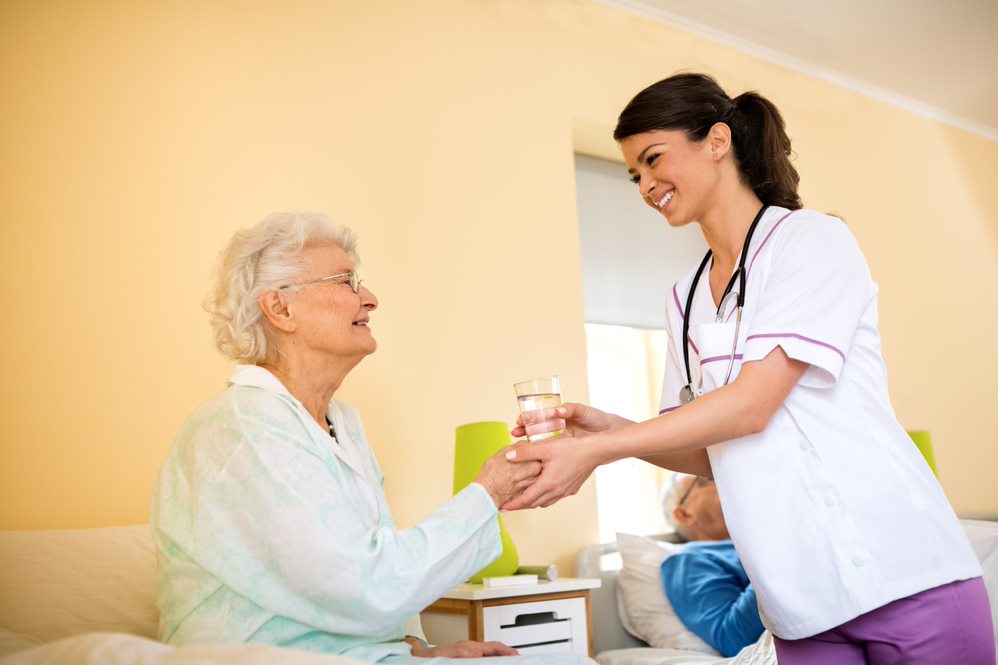Anemia is a blood disorder that affects people of all ages, but it is most prevalent in the elderly, pregnant women, and children. According to AAFP, anemia is prevalent in 8 to 44 percent of older adults. In elderly females, anemia can be caused by several factors, including a decline in red blood cell production, underlying health conditions, and nutritional deficiencies.
In this blog, we’ll take a closer look at the most common causes of anemia in elderly females. We’ll also discuss its symptoms and ways to prevent and treat this condition. So, keep reading to find out!
What is anemia and how does it affect the elderly?
Anemia is a condition that develops when the body lacks enough healthy red blood cells. It is especially common in the elderly, who may not get enough iron, hemoglobin, or vitamin B12 in their diets. Anemia can cause a number of problems for seniors. So, let’s have a look at how anemia affects the elderly:
- Anemia can cause fatigue, breathlessness, and a rapid heart rate in elderly patients.
- Untreated anemia can lead to stroke, heart disease, or kidney failure.
- Anemia can make it difficult for the body to fight infections such as flu or pneumonia.
- Can lead to a decline in quality of life and overall health.
- If left untreated, anemia can be deadly.
What are the symptoms of anemia in the elderly?
The symptoms of anemia in the elderly can vary depending on the seriousness of the condition. Here are some common symptoms of anemia in the elderly:
1. Fatigue
Fatigue or tiredness is one of the most common symptoms of anemia in the elderly. It can make it difficult to complete their activities of daily living (ADLs). Tiredness often comes on slowly at first, with fatigue coming much sooner, so if you notice any changes, be sure to ask your loved ones because it could mean something wrong!
2. Shortness of breath
Shortness of breath can indicate that an older adult is suffering from anemia. It is because anemia can make the heart work harder to pump blood through the body, leading to shortness of breath. Additionally, anemia can cause fluid buildup in the lungs, leading to difficulty in breathing.
3. Hands and feet turning cold
Hands and feet turning cold is another common symptom of anemia in the elderly. When the body doesn’t have enough red blood cells, it can’t deliver oxygen to all of its tissues, including the extremities. As a result, it can cause a person’s hands and feet to feel cold and clammy. In severe cases, older adults suffer from purple fingertips syndrome too.
4. Skin turning pale or yellow
If you notice that your elderly loved one’s skin is turning pale or yellow, it could be a sign that they are experiencing anemia. Anemia is one of the causes of low iron and low hemoglobin in elderly females, as well as reduced oxygen supply in the blood, leading to a pale, yellowish complexion on the skin.
5. Dizziness
Anemia can cause a feeling of lightheadedness or dizziness because it reduces the amount of oxygen reaching the brain. That can lead to problems with balance and coordination, leading to an increased risk of falls in the elderly.
Some more common symptoms of anemic seniors include – chest pain, uneven heartbeats, headaches, loss of appetite, etc.
What are the causes of anemia in elderly females?
There are many potential causes of anemia in elderly females. While the exact cause of anemia in any individual may be difficult to determine, understanding the potential causes is an important first step in finding a treatment that will be effective. Here are the most common causes:
1. Iron deficiency
The most common cause of anemia in the older population is iron deficiency. It can be due to nutrition deficiency, difficulty absorbing iron from food, or blood loss. Iron deficiency anemia can also result from a lack of vitamin B12 or folate in the diet. It can lead to a decrease in red blood cells and hemoglobin levels, which can cause fatigue, shortness of breath, and pale skin.
2. Bleeding
Bleeding is another common cause of anemia and can occur internally or externally. Internal bleeding is often more difficult to detect but can occur due to conditions like ulcers or cancer. External bleeding is usually more apparent and can occur due to injuries or surgery.
3. Chronic diseases
Chronic diseases like kidney failure or rheumatoid arthritis can also lead to anemia in elderly females by causing inflammation and destruction of red blood cells. Additionally, anemia can be caused by bone marrow problems, infections, or autoimmune disorders.
4. Poor nutrition
Poor nutrition is a significant cause of anemia in elderly females. Poor nutrition is a significant cause of anemia in elderly females. Various factors, including inadequate intake of nutrients, unbalanced meal plans, or medical conditions such as gastrointestinal diseases and kidney disease, can cause poor nutrition. A lack of healthy food can also lead to other complications, such as cognitive impairment or dehydration from not drinking enough fluids.
5. Medication side effects
Many medications, both prescription and over-the-counter, can cause anemia as a side effect. Some of the most common medicines that can cause anemia include blood thinners, heart medications, birth control pills, and stomach acid blockers. In addition, certain cancer treatments can also lead to anemia.
Prevention of anemia in the elderly females
Prevention of anemia in elderly females can be done through a number of methods. Let’s look at some preventive measures to protect your senior loved one from becoming anemic.
1. Eating an iron-rich healthy diet
Prevention of anemia in the elderly requires eating an iron-rich healthy diet. Some good sources of iron include lean red meat, poultry, fish, legumes, nuts, and seeds. It is also essential for elderly females to drink plenty of fluids, especially water and Vitamin C, as they can help absorb iron.
2. Taking vitamin supplements
Vitamin supplements are an excellent way to increase the level of red blood cells in your body, which can prevent you from developing any type if anemia. You could also take a multivitamin with iron or Vitamin B12 for extra help if you’re not getting enough of these from your diet.
3. Getting enough exercise
Regular exercise plays a vital role in the prevention of anemia. Exercise helps keep the blood vessels healthy, improves iron absorption from food, increases production of red blood cells, and reduces the amount of blood lost each month. Some good exercises for elderly women include walking, biking, swimming, and light weightlifting. It’s important to start slowly and gradually increasing the workouts’ intensity and duration.
4. Treating underlying illnesses
The prevention of anemia in elderly females can be possible by treating the underlying illnesses that cause it. For example, suppose an elderly female has diabetes. In that case, regulating her diabetes will help to prevent her from getting anemia since diabetes can interfere with the body’s ability to absorb nutrients.
5. Modifying medicines
Often, elderly females take multiple medications, some of which may contribute to their anemia. By modifying their medications, doctors can help reduce the likelihood of developing anemia. It may include switching to one that doesn’t worsen anemia or lowering the dosage of a medication that is causing complications.
3-point summary
- Anemia results from reduced healthy red blood cells in the body and can cause minor health issues like fatigue to more severe complications such as kidney failure or heart disease.
- Causes of anemia in elderly females usually include iron deficiency, poor nutrition, loss of blood, medication side effects, and chronic illness.
- Healthy food intake, maintaining an active lifestyle, and treating underlying illnesses can help prevent anemia in elderly females.
Final thoughts
While there are many potential causes of anemia in elderly females, the ones mentioned in this post are some of the most common. Therefore, it is important to consult a doctor to determine the specific cause of anemia to create an effective treatment plan. With proper diagnosis and treatment, many cases of anemia in elderly females can be managed successfully.
Are you or someone you know experiencing symptoms of anemia? We hope this article has helped give you some direction as you seek answers to why you may be tired all the time! Also, please take a look at some of the related articles about senior health below:
- Asthma in Seniors: Ways to Deal with It
- UTI in Seniors: Know the Symptoms
- Hip Surgery Recovery Time for the Elderly
- 7 Side Effects of Melatonin on the Elderly
FAQs
- How many types of anemia are there?
There are many types of anemia. However, the three most common types are iron-deficiency anemia, sickle-cell anemia, and thalassemia.
- What can worsen your anemia?
Anemia can worsen due to a lack of iron, folate, or vitamin B12 in the diet. Some other factors include:
- Having a blood transfusion
- Bleeding for a long time
- Heavy menstrual bleeding
- Pregnancy
- Chronic diseases
- Who is most affected by anemia?
Anemia can affect anyone, but it is most common in pregnant women, infants, children, and older adults. According to WHO, about 42% of children, and 40% of pregnant females have anemia symptoms.
- What happens if a woman is anemic?
If a woman is anemic, she may feel weak and tired. She may also have a pale complexion and find it difficult to breathe. It may result in low productivity and reduced quality of life.
- Which anemia is common in females?
Iron deficiency anemia is the most common in females. It is mainly because they lose blood each month during their period. It’s also more likely to develop when females undergo hormonal changes, like before or after their periods.

